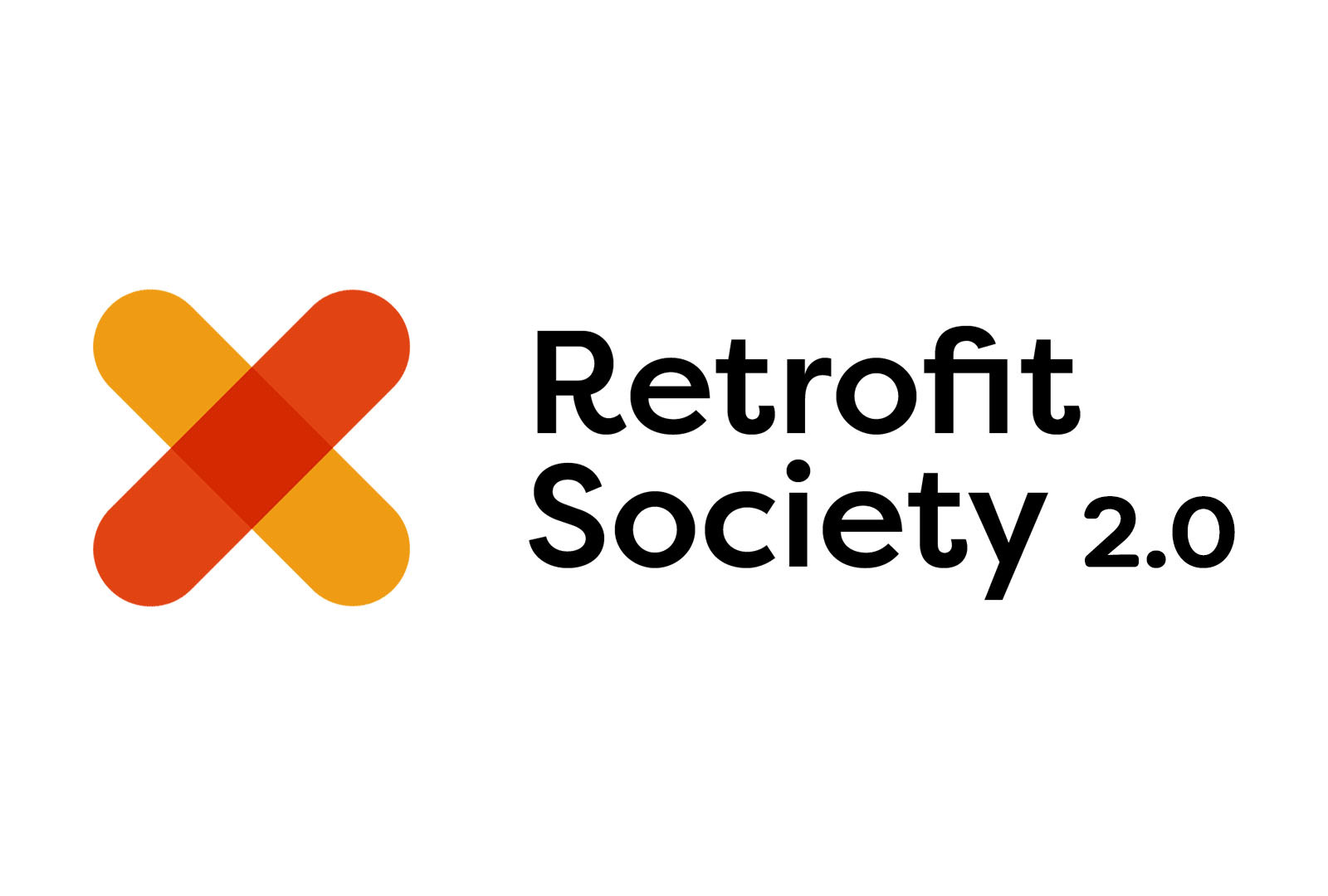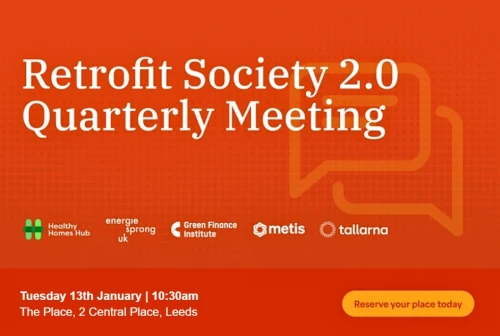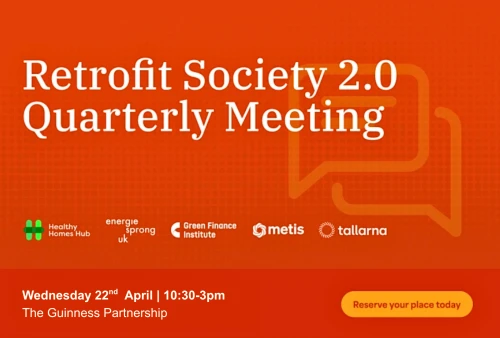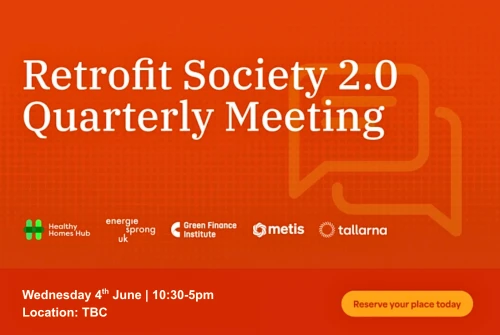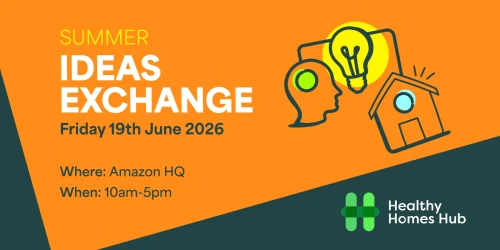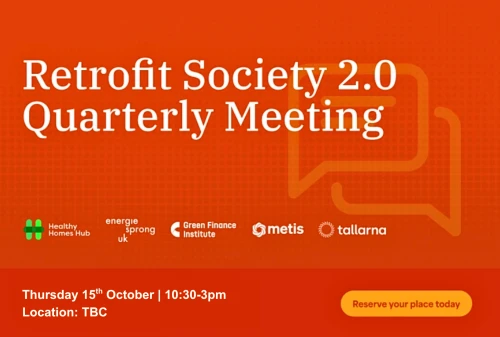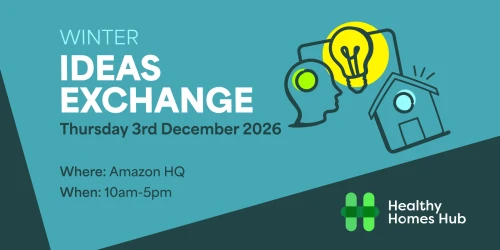RS2: Making Retrofit Business as Usual
10/10/2025
Jenny Danson
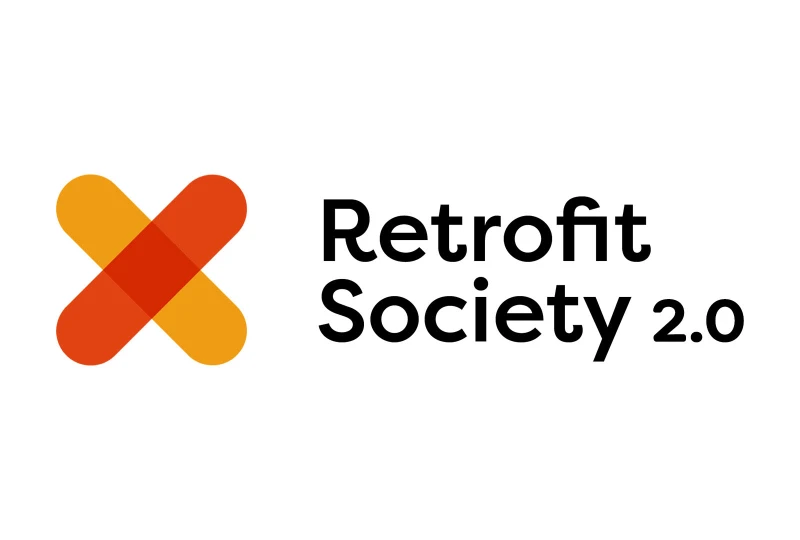
When it comes to decarbonisation, housing providers know the theory. The real challenge is embedding it into everyday business, where sustainability isn’t a special project, it’s simply how we do housing.
In this session, we explored exactly that: how to get retrofit out of the “initiative” box and into business as usual (BAU).
We heard from two sector leaders:
Bob Spedding, Director Asset & Sustainability at Yorkshire Housing
Paul Norman, Director of Asset Strategy and Sustainability at Clarion Housing Group
Both are making huge strides in shifting their organisations’ culture, investment approach, and customer engagement strategies to make retrofit stick.
Smarter investment: turning data into better decisions
Bob opened by explaining how Yorkshire Housing are using data to make smarter, more holistic investment decisions.
Traditionally, decent homes programmes have focused on kitchen, bathroom, and window replacements, often following a rigid stock condition survey cycle. Yorkshire Housing decided to flip that on its head.
They now overlay stock condition data with energy performance, customer satisfaction, repairs history, complaints, and local intelligence from teams on the ground.
This mix of insight means that when they plan investment programmes, they’re not just maintaining homes, they’re maximising social value, tackling disrepair, and improving health outcomes at the same time.
“We’re not just replacing a kitchen or a roof.... we’re using that opportunity to improve performance, comfort, and value for money all in one go,” said Bob.
The Yorkshire Housing Standard: beyond compliance
This data-led shift has evolved into what they now call The Yorkshire Housing Standard, a new benchmark that deliberately goes beyond the outdated Decent Homes criteria.
Every time a roof is replaced, integrated solar PV is now fitted as standard. All window replacements (except in conservation areas) are triple-glazed.
Other improvements include:
Flood-rated doors for homes in high-risk areas (identified through Environment Agency data).
Wastewater heat recovery systems for all new bathrooms by 2026.
Trials of smart air bricks and underfloor insulation to boost energy performance.
Plans to roll out IoT sensors across all stock by 2027, leading to a smart ventilation strategy by 2028.
By 2029, battery storage and EV charging points will be standard on major roof programmes.
And by 2030, Yorkshire Housing will stop installing gas boilers altogether.
This isn’t a “green pilot”. It’s a clear, costed, and embedded roadmap. Each measure is built into the business plan, ensuring long-term delivery rather than short-term experimentation.
From Clarion: making sustainability a shared business goal
Paul Norman from Clarion Housing shared how the UK’s largest housing association is working to integrate sustainability into every part of its asset management and finance functions, not as an add-on, but as part of core business planning.
Clarion's decarbonisation programme is huge, a multi million pound challenge, that has a funding gap that can't be bridged through grants alone.
“We know we have a shortfall. There's no model that automatically fixes that... so we had to change how we work” Paul explained.
That meant blending innovation, efficiency, and financing differently: from leveraging private finance against solar installations to finding efficiency savings by aligning retrofit with planned investment cycles.
But the key to success, he said, wasn’t technical, it was cultural.
“We used to speak different languages in assets and finance. Now we understand each other’s worlds....and the risks we both carry.”
That understanding has helped Clarion normalise sustainability, building shared ownership across the business.
Customer-first retrofit: rethinking engagement
A major theme throughout the discussion was resident engagement and how to get it right.
Paul spoke about Clarion’s work in redesigning the customer journey to help residents feel informed and confident about changes to their homes.
“Every home is different. Every customer is different,” he said. “Traditionally, we’d contact residents a few months before work starts. But when you’re changing how they heat or power their homes, that’s nowhere near enough.”
Clarion found that people in social housing are 25% less likely to switch energy suppliers than the general population. So convincing them to join a new energy model or pay differently for their heating needs longer engagement and more trust.
The lesson? Retrofit isn’t just a technical exercise. It’s a human conversation.
Residents need time to process change, and they need people they trust explaining it. Clarion are training non-technical staff, such as neighbourhood officers, to have those conversations clearly and confidently, using plain language, not jargon.
“We realised we’re not the hero in this story,” Paul reflected. “Our job is to guide people, not to sell to them.”
Balancing short-term costs and long-term gains
Both speakers were frank about the trade-offs required to make sustainability BAU.
At Yorkshire Housing, the commitment to end gas boiler installations by 2030 means a short-term rise in repair costs as they extend boiler lifecycles from 12 to 15 years. But that decision frees up capital to fund low-carbon alternatives.
“We’ve accepted a bit of pain now to invest in better solutions later,” Bob said.
They’re also upskilling their in-house repairs team to install and maintain low-carbon systems, ensuring that when the shift comes, they already have the skills and capacity in place.
Meanwhile, Clarion are working to understand the real costs of delay. What happens if investment moves too slowly, and what risks that introduces across the organisation. Bringing finance and asset teams closer has created a clearer picture of shared risks and trade-offs, making the investment case stronger.
IoT and evidence: measuring what matters
Both organisations are embracing IoT sensors to collect evidence on building performance and occupant experience.
At Yorkshire Housing, sensors are already tracking temperature, humidity, and energy use before and after retrofit works, helping to show what’s working and where adjustments are needed.
Paul shared how Clarion has used similar data to overcome customer fears:
“Residents worried that power cuts would leave them cold with a heat pump. But the data showed that well-insulated homes lost just one or two degrees over 48 hours. That proof builds trust.”
This kind of insight doesn’t just guide better technical decisions. it underpins the human conversations that make retrofit possible at scale.
Key takeaways: making sustainability business as usual
A few golden rules emerged from this session:
Use every touchpoint. Treat every repair or investment as a retrofit opportunity.
Overlay data sources. Combine asset, repairs, and resident data to guide smarter investment.
Design for longevity. Build in standards that align with decarbonisation and climate resilience, not just compliance.
Invest in engagement. Train teams to talk confidently about energy and retrofit in ways residents understand.
Normalise collaboration. Finance, asset, and customer teams must plan together, not in silos.
Track and prove impact. Use IoT and repairs data to evidence savings, health improvements, and satisfaction.
Looking ahead
Both Yorkshire Housing and Clarion show what it looks like when retrofit stops being an external project and becomes part of the organisation’s DNA.
They’re proving that by joining up data, teams, and purpose, retrofit can be scaled responsibly , improving homes, lives, and long-term business sustainability.
As Paul put it:
“Becoming net zero is the outcome of doing all the right things....not the reason we do it.”
And that, perhaps, is the mindset shift the whole sector needs.
Become a member to read this article and more!
Social Housing Providers, Local Government, and Academics can sign up for free to access this article and more.
Already registered? Login Here
Related Content
What Are the Benefits of Being a Member of the Healthy Homes Hub?
Industry Recognition and Networking:
Connect with a thriving network of over 350 housing organisations, including decision-makers, innovators, and leaders. Build partnerships that enhance your professional growth and create lasting business opportunities.
Showcase Your Expertise:
Demonstrate your impact by participating in exclusive case studies, webinars, and events. Highlight your contributions to creating healthier, sustainable homes, reaching a broad audience across the sector.
Influence Policy and Advocacy:
Be part of shaping housing policy through direct engagement with policymakers and advocacy efforts. Stay at the forefront of discussions driving meaningful change in the housing sector.
Access to Market Insights:
Gain access to Healthy Homes Hub’s regular newsletters, expert analysis, and resources. Stay informed about trends, regulations, and innovative practices that affect housing professionals.
Specialised Events and Workshops:
Take part in events like the Immersive Study Tours, offering hands-on learning and networking opportunities. Visit groundbreaking projects and facilities to explore real-world solutions for healthier and more sustainable homes.
Exclusive Tools and Resources:
Only members can upgrade to Housing Sage, a cutting-edge AI assistant tailored to social housing professionals. Benefit from personalised insights, regulatory guidance, and innovative ideas to enhance your operations.
Collaboration Opportunities:
Contribute to Healthy Homes Hub’s mission by sharing best practices, participating in action learning programmes like the Retrofit Society, or co-developing solutions with academic and industry leaders.

